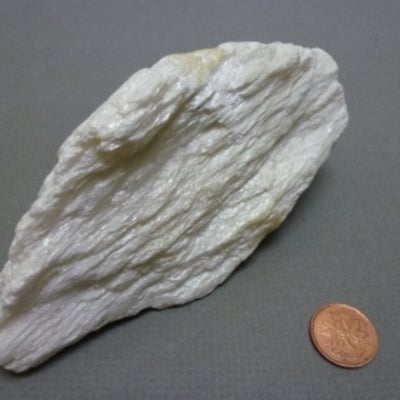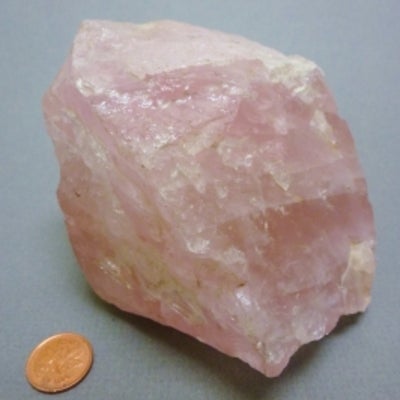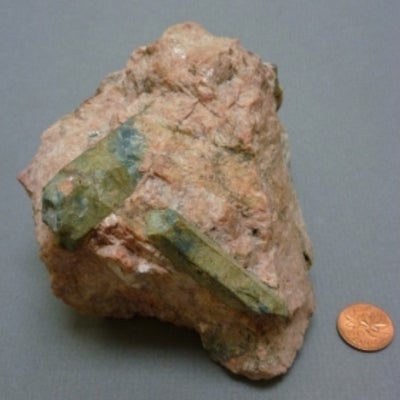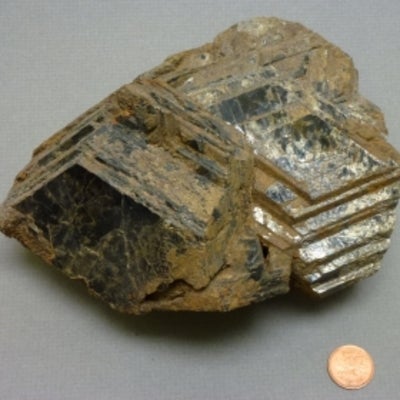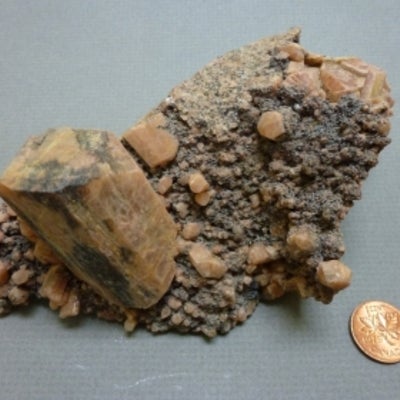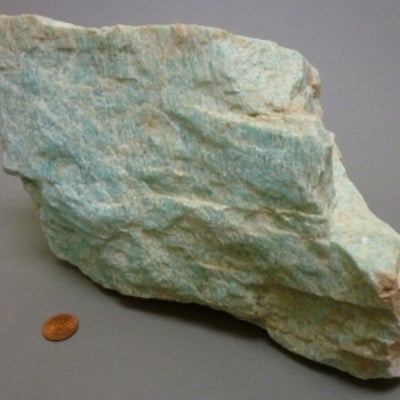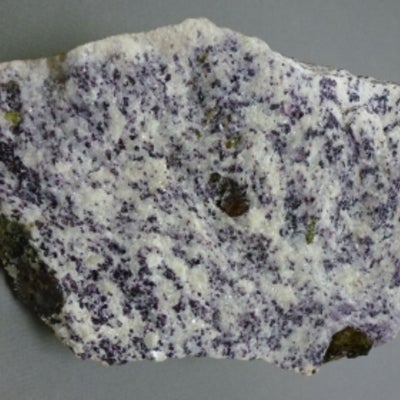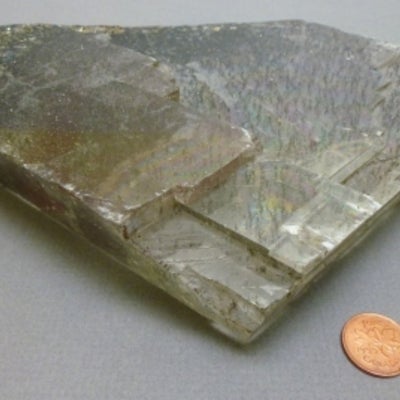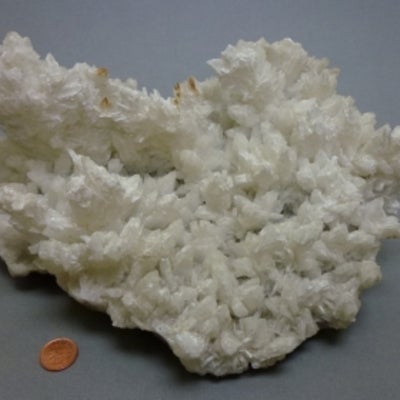View a slide show of minerals common to East Central Ontario and below that, read about the geologic history of the area.
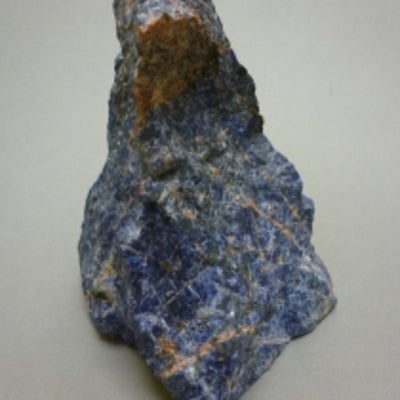
Sodalite is a scare mineral which was named in reference to its sodium content by a Glasgow chemist, Professor Thomas Thomson. It is formed in Nepheline syenites, phonolites, and related rock types; in metasomatized calcareous rocks, and cavities in ejected volcanic blocks. Sodalite from Bancroft, Ontario
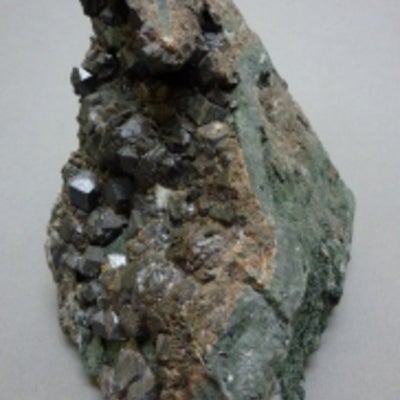
Andradite is a nesosilicate with the chemical formula Ca3Fe2Si3O12. It is a member of the Garnet group and may be yellow, green, yellow-green, red, or black. It gets its colour from manganese and titanium. Epidote is a rare mineral which is most commonly used as a rare mineral specimen or as a gemstone. Andradite and Epidote sample from Marmoraton Mine, Marmora Ontario



East-Central Ontario History
The Canadian Shield in east-central Ontario is referred to as the Grenville Province and was formed approximately 1.35 billion years ago during the Grenville orogeny. The term Grenville is often used to refer to a range of Mesoproterozoic tectonic events that occurred between approximately 1.3 - 1.0 billion years ago, resulting in the series of orogenies that stretched across 10 000 km of the globe. The south-eastern section is the most thoroughly studied and hosts many unique rock formations and mineral deposits.
The topography in the Madoc-Bancroft region is dominated by intrusive igneous activity, hosting up to sixty different plutons! These plutons are thought to originate hundreds of kilometers beneath the crust, where pressures and temperatures are ideal for the formation of many unique minerals.

Post emplacement venting produced an intricate network of quartz veins, some of which contain gold and silver. Late-stage fracture filling also deposited calcite, fluorite, lead, and zinc.
The high amount of rock folding in the Queensborough area allowed for the mineralization (approximately 10 km, north-east of Madoc), which is thought to have been the result of an acidic volcanic vent, which supplied the sulphur needed to produce the pyrite (FeS2). The formation of these types of deposits is typical in this area.
Moria Lake near Madoc appears to be a shallow basin that formed between three plutons, whose individual motions produced venting needed to form the famous Canadian Talc Deposit. Originally discovered in 1867, Canada Talc is one of the few mines in the world to have operated continuously for more than a century.

Late-stage fracture faults were filled with fluorite, calcite, and baryte. Becoming the economic basis of Madoc’s well-known fluorite mining industry that flourished from the 1930s to '40s, at the Madoc Fluorite Mine.
The Quadville area in south-eastern Ontario is well known for its large pegmatitic deposits. Pegmatites are coarse-grained igneous rocks, commonly found in irregular dikes and veins. The composition of pegmatites may range from simple to complex and can include rare minerals that are rich in elements such as boron, fluorine, niobium, tantalum, and uranium. The pegmatite was formed through pluton activity, where the Earth’s crust deformed and cracked during the mountain building times. The high pressures within the Earth forced magma and enriched fluids into the cracks, and as the mixture cooled very slowly, crystals formed and grew to enormous sizes. First appeared feldspar, quartz, and mica, and later followed beryl, fluorite, and tourmaline.
Mountain Building in East-Central Ontario
Around 1 billion years ago there was a period of mountain building that affected all of eastern Ontario. The igneous and sedimentary rocks that were already deposited as part of the Earth’s crust were highly compressed, folded, and metamorphosed. The sedimentary rocks of the area were altered to marble, amphibolite, paragneiss, and quartzite, while the igneous rocks were altered to mostly amphibolite.
During the mountain building process, the Earth’s crust was being disrupted which caused the magma in the mantle to rise towards the surface, eventually reaching the base of the crust. These magmatic rocks had many different compositions, some of which included gabbro, granite, syenite, and nepheline syenite.
During this mountain building event, the Bancroft region was deeply buried to a depth of about 16 km and experienced a very high degree of alteration compared to the surrounding areas. Metamorphic conditions (high heat and pressure) lasted for a long period of time, producing larger than normal mineral grains of feldspar, apatite, and mica crystals. One crystal reporting to be 12 feet in length and 4 feet thick!
Further to the south, the Hastings basin (Madoc area) was not as deeply buried as it was in Bancroft, so the metamorphic conditions that the rocks experienced were lower. It endured long periods of this lower metamorphic grade causing large crystals, though in other instances caused the chemical constituents of the rock to “unmix”.
After the orogeny halted, there was a period of time where the land experienced excessive amounts of erosion. The tall newly built mountains were worn down by processes of erosion. Through intensified precipitation, strong winds, glacial, and temperature changes, the mountains were worn (eroded) down. The topographic relief and general geology of Madoc and Bancroft have not changed much since the end of the Precambrian, about 550 million years ago, and is basically the same as we see it today.
Following the major erosion of the Grenville mountains, eastern and southern Ontario was covered in shallow seas that lead to the formation of sedimentary rocks. Check out Southern Ontario Palaeozoic Rocks for more information about this topic.
Definitions
Veins: Pockets in rocks where liquid and/or gas are trapped creating an environment suitable for crystal formation.
Fracture: A general term for any break in a rock, whether or not it causes displacement, due to mechanical failure by stress. Fracture includes cracks, joints, and faults.
Volcanic vents: Are the locations from which lava flows and pyroclastic material are erupted.
Basin: A dip or depression in the surface of land or ocean floor.
Pegmatitic: Igneous rocks of extremely coarse grain-size, usually found as dykes.
Metamorphic conditions: Metamorphic conditions include an increase of temperature, lithostatic pressure, direct pressure (stress), attack by chemically active liquids and gases (which exist in the pore spaces of the rock) or by a combination of these agents.
Metamorphic Grade: The degree of metamorphic change in rocks.
Magmatic rocks: (also known as igneous rocks), Rocks formed by the solidification of molten material (magma) that originated from the earth.
Sedimentary rocks: Consist of material derived from pre-existing rocks through physical erosion and chemical weathering.
Igneous rocks: Rocks formed by the solidification of molten material (magma) that originated from the earth.
